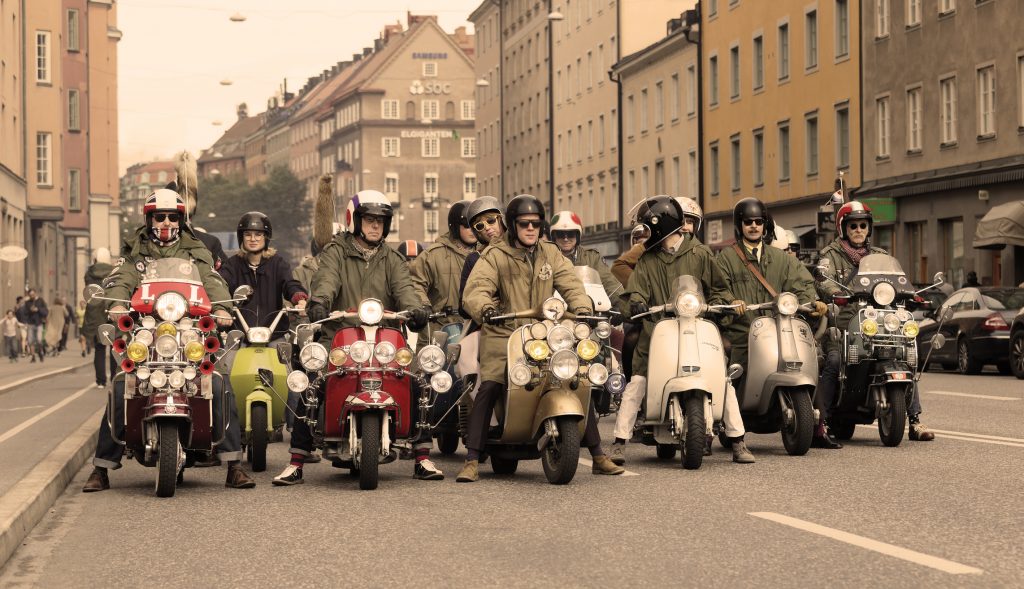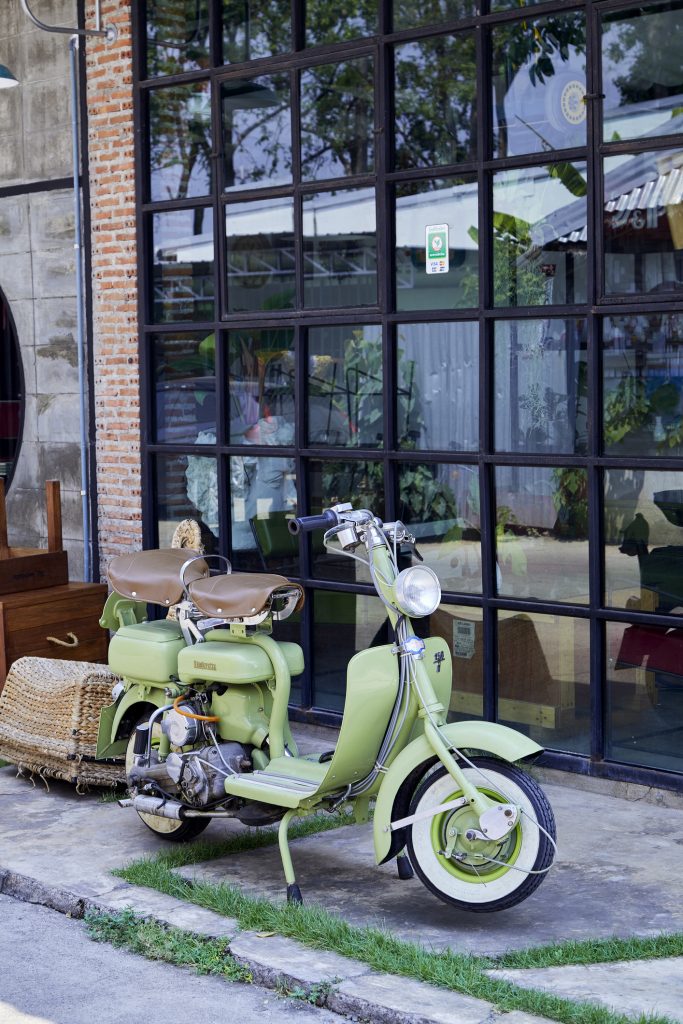Anyone who has ever owned a vintage motorcycle, scooter or moped knows – there is a certain magic in the mechanical. These machines of analog engineering that work via meshing gears, sliding cables, and the occasional kick of a recalcitrant part or two.

It isn’t about performance – newer machines are occasionally faster, certainly more reliable and undeniably more efficient – it’s about the connection to the mechanics, the connection to the process that propels you along the road.
When it’s all about getting somewhere, on time and grease free, the modern plastic scooter might be the best choice. But nothing can replace the sensation of riding a clutch’s friction point, shifting gears in time with the revving engine, feeling the performance of the machine change with weather an altitude – the riding experience is very different.
I’d even argue the experience you get riding a vintage scooter makes you a better rider.

Throttle control for example – on a vintage geared scooter you quickly learn to give it more or less throttle to enable smoothly shifting into higher or lower gear.
Because the gearing changes, you will otherwise have a sudden increase or decrease in engine RPMs and this can be…. disconcerting if done badly. Especially when downshifting as the engine speed will be higher in the lower gear, so keeping the same amount of throttle may result in the engine suddenly racing.

Vintage machines also encourage you to understand the mechanics – and the simpler construction makes troubleshooting problems generally easier than a more modern, more electronic machine.
Fuel, air, spark is the mantra of dealing with a running issue on a vintage machine, and given the simple mechanical nature you may be able to get it running again using a twist of tire, some duct tape, and the occasional appropriated but and bolt.
Just try and get it running before the person who you swiped the bolt from discovers something falling off a wall.
Modern motorcycles with ABS, rider assistance such as traction control, and possibly even future commercial machines with things like gyroscopic stability – each of these makes a machine easier to ride, but leaves you less connected to the actual experience of riding. Sure, they make a long commute ride easier – but does that take some of the actual riding experience away?

Today we have more and more devices that replace living with convenience – we’re an Uber summoning, app ordering, delivery eating culture that is losing many of the basic skills we once took for granted.
Now I’m not advocating to go back to the days of manual spark advance or total loss oil systems – but having experience on a machine that *requires* you to pay attention is something that I think can only benefit. Even as it occasionally frustrates with a random breakdown, or cleaning a bit of grit out of a carb, or cable swapping a broken clutch cable on the side of the road. It teaches sufficiency in a world increasing about immediacy – patience is a virtue I struggle with myself and I’ve at least gotten better at dealing with some tasks due to my experience with a manual shift, carburated vintage Vespa scooter as a daily driver.
I’m certainly not saying you should give up the new scooter, or you should attempt a major road trip on a vintage machine without a lot of preparation and a proper safety net – but in the end you should try making the occasional journey on a machine where how you get there is *Really* more important than where you are going.
So, after our earlier article on “The Case for Plastic: Why you should own a modern scooter” – we’re saying…. maybe you should own a vintage one.
Because as every scooterist should know…. the only right scooter is *all* the scooters. All of the time.

wow– super great – enjoy, enjoy …..
I’ve really been thinking about getting a scooter lately. Kind of want something to work on and have fun riding around the city, as opposed to my Honda CB500X. I also wouldn’t mind having some additional storage as well. The only problem is I can’t decide what size would be ideal. 50cc seems to small for most urban riding, considering here in Hamilton the minimum limit is 50-60kmh. 125cc would be OK but then I’d feel limited to shorter trips. 400cc seems like it would be ideal, good for longer rides, but then it doesn’t have that cool retro scooter look. I don’t know…..what a conundrum!
For me personally, the sweet spot is somewhere between 125-250cc. A 125cc should get you out on the 80kph roads (depending on the machine, the Sachs Madass 125 I had for a review years ago struggled to maintain 80kph on any sort of hill, though it would do it on the flat.) 250cc tends to be where I’d be comfortable taking it out on the highway – so a 250cc is around the right range for a “jack of all trades” machine. Something that you can take on the 400 series when you need to, but that won’t be too heavy and awkward for stop and go traffic or jumping curbs to park in a handy crevice between buildings. All in all – if you are buying used, you might let the market decide for you. A couple years ago I picked up a Kymco People 200S in mint condition for $700 at the end of the season for example – it’s only a 163CC in reality but can manage (ok without anything left) 100kph. And if you can find something inexpensive you can play around with it and upgrade later if you decide you need something more highway capable.